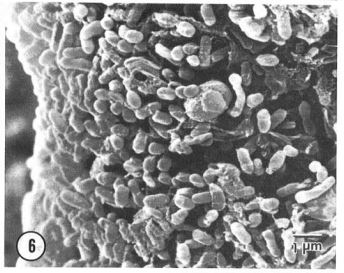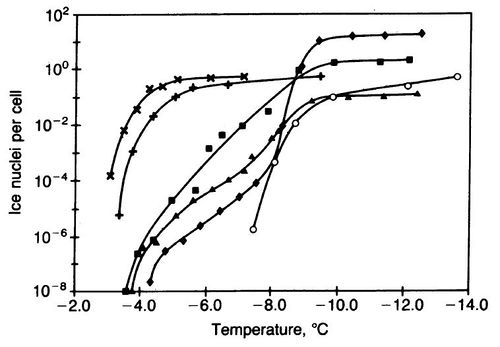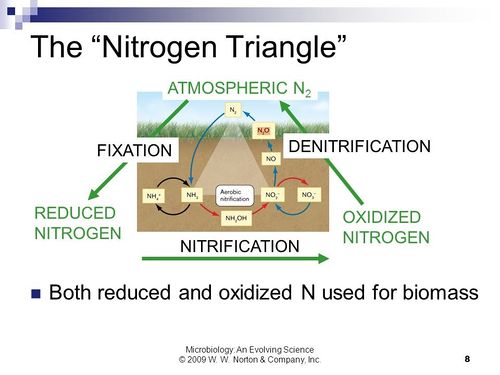Pseudomonas syringae: Bioprecipitation Mechanisms and Implications
Overview
By Brandon Byrd
Pseudomonas syringae have a significant impact on weather systems and ecosystems worldwide. This bacteria has previously been studied in depth as a plant pathogen, and it has recently been studied as a major contributor to bioprecipitation. P.syringae are rod shaped, gram-negative bacteria with polar flagella that is a plant pathogen to a wide variety of plant species at cold temperatures (Morris et al 2008). This bacteria is found in agricultural locations as well as non-agricultural locations such as clouds (Morris et al 2008). The fact that it has the capability to grow in a wide range of environments and ecosystems gives this bacteria the potential to drastically impact biogeographical systems. P.syringae also has an extraordinary ice nucleation activity which allows this bacteria to catalyze freezing water at warm temperatures which sparked interest in its role in the water cycle (Maki et al 1974). This is a major key for P.syringae’s effect on biogeographical systems. It is also important to further analyze their ice nucleation ability to understand the mechanisms in which they influence major weather systems such as the water cycle. Furthermore, how P.syringae can impact humans and biodiversity based on their influence on ecosystems and the environment.
History

.
P.syringae are a part of the pseudomonas genus (Figure 1). This genus is gram-negative aerobic proteobacteria. This genus is categorized as pathogens with a wide variety of niche potential due to much variation in metabolism across the species in this genus (Morris 2013).The history of the pseudomonas genus dates back millions of years ago to when they were found in aquatic habitats before plants and land agriculture (Morris et al. 2013). Pseudomonas is still one of the most common bacteria present in many aquatic environments today such as oceans and wetlands. Also, a study done by Pesciaroli and colleagues have shown a new strain of P.syringae to be present in intertidal aquatic environments (Morris et al. 2013). P.syringae was first discovered by Paul Hoppe in 1961 while studying corn crops for the U.S. Department of Agriculture (Parrott 1993). His study demonstrated a bacteria that caused crop freezing problems at temperatures around negative two to four degrees Celsius. His research led to further research in later years which revealed P.syringae and its ice nucleation characteristics which were causing the crop freezing problems. The crop freezing problem that occurred is that between negative eight to four degrees plant stems and roots would freeze due to the presence of P.syringae. Ice nucleation research of P.syringae has led to a cascade of promising discoveries linking this species to important bioprecipitation mechanisms that continue to influence weather in many ecosystems. There was a discovery of ice nucleation proteins that protrude from the outer membrane of P.syringae which facilitates their ice nucleation ability (Morris et al. 2013). These proteins are believed to have arisen without the use of horizontal gene transfer millions of years ago because of evidence of a three secretion system (Morris et al. 2010). The gene for the outer membrane ice nucleation protein is most likely in the core genome of proteobacteria such as pseudomonas syringae. The most likely common ancestor of this gene came from more general orders including Pseudomonadales and also Enterobacteriales (Morris et al. 2013). The study of these ice nucleation proteins have given rise to the present research regarding P.syringae in its direct significance to the water cycle and indirect significance to other biogeographical systems.
Bioprecipitation and P.syringae’s Role in Bioprecipitation

Include some current research, with at least one figure showing data.
Mechanisms for Ice Nucleation

Include some current research, with at least one figure showing data.
Ecological Implications of
P.syringae Bioprecipitation

Include some current research, with at least one figure showing data.
Conclusion
References
Authored for BIOL 238 Microbiology, taught by Joan Slonczewski, 2016, Kenyon College.
